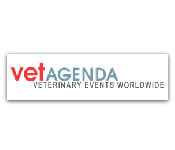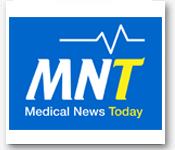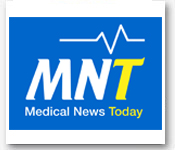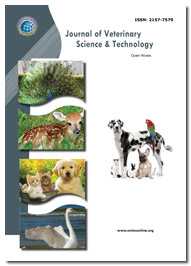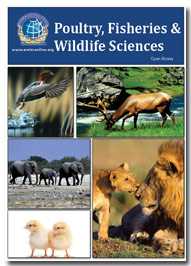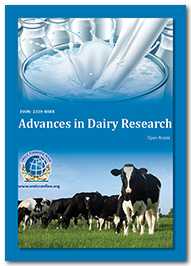Theme: Radical Approaches on Prevention, Diagnosis and Treatment of Wild and Domestic Animals
Veterinary Summit-2015
Veterinary science is vital to the study and protection of livestock, herd health and monitoring the spread of disease. It requires the acquisition and application of scientific knowledge in multiple areas and the use of technical skills in disease prevention that can affect both pets and wild animals. Animal Production facilitates improvements in agricultural productivity, with the emphasis on sustainable animal and aquaculture production systems and administers the Animal Improvement. The animal production sector has been undergoing change at an unprecedented pace over the past few decades. Most of the veterinary conferences in 2015 are focused towards development in animal production sector.
Track 2: Animal Nutrition and Diseases
The Global veterinary healthcare market, estimated at $24.8 Billion in 2014, is set to reach $34.39 Billion by 2019, with a CAGR of 7.86% over the forecast period. Veterinary healthcare market is gaining importance as a result of manufacturers focus on production of products with specialized formulations and specialized manufacturing processes. In United States alone, Americans spent more than $53 billion on food, pet supplies, over-the-counter and prescription medications, veterinary care, live animal purchases, dietary supplements and other pet-related services. Increased love for the pets leading to increased ownership, more people awareness for animal health, and far less requirements for animal health drugs approval are the major driving factors for the market. Another factor that drives the market is continuous innovations and technological advances in development of animal health drugs. However, increased competition for cultivated land and scarcity of arable land are the major restraints for the market growth. The new type of diseases in animals and their subsequent transfer to humans via animal feed quality consumption and companionship are escalating the veterinary healthcare industry globally. The strategic decisions in research and development of manufacturers are expected to positively impact global veterinary healthcare market.
Track 3: Recent Developments
Genetic selection of livestock is currently navigating through a genomic era promoted by advances in DNA technologies. For instance, massive amounts of genomic information are incorporated into the prediction of genetic merit providing higher predictive accuracy. This increment has led to important changes in the animal breeding industry. New advances continue, and efforts are currently placed in whole genome sequencing for its future implementation to improve accuracy of genomic selection or mapping new QTL of interest.
About 75% of the new diseases that have affected humans over the past 10 years have been caused by pathogens originating from an animal or from products of animal origin. Many of these diseases have the potential to spread through various means over long distances and to become global problems. In addition a number of well-known and preventable animal diseases that can be transmitted to humans (i.e. zoonoses) such as rabies, brucellosis, leishmaniasis and echinococcosis continue to occur in many countries especially in the developing world where they mostly affect the poorest segment of the human population. They cause a serious amount of deaths and millions of affected people every year. All major zoonotic diseases prevent the efficient production of food of animal origin, particularly of much-needed proteins, and create obstacles to international trade in animals and animal products. They are thus an impediment to overall socioeconomic development.
Track 4: Veterinary Medicine
Different animal species vary greatly, and thus each species may need specific medicines for the same disease. The research and marketing of veterinary medicines is, therefore, more complicated compared to human medicines. Unlike human medicines, the prices of veterinary medicines are not regulated. The selection of veterinary medicines comprises about 270 trade names. The Global Veterinary Vaccines market ($4.23 Bn) accounted for around 20% of the total Vaccines market ($29.71 Bn) in 2010. It is expected to grow with a CAGR of 5.80% to reach the market size of $5.6 Bn by 2015. United States represents the largest market for Veterinary vaccines worldwide, with the market share of 46% and market size of $1.94 Bn in 2010. The global veterinary diagnostics market has seen a paradigm shift in the past decade with the emergence of a number of new and technologically advanced products, which had a positive impact on the overall growth of the market. The market has seen many new technologies from the human diagnostics segment being adapted into the veterinary diagnostics segment. This trend still continues and with the human diagnostics getting cheaper, their application into the veterinary segment is expected to grow further. Animal diagnostic events are being held in various parts of the globe to renovate modern technologies in animal diagnosis that would be highly effective.
Track 5: Animal Breeding and Genetics
Animal genetics provide advance breeding technology and testing services such as DNA typing, genetic trait tests, and genetic disease tests. In recent years, animal genetics market witnessed tremendous growth which is mainly attributed to rising demand of animal products due to increasing global population and rapid urbanization, adoption of advanced genetic technologies for larger-scale production and quality breeds, development of cutting-edge technologies in animal genetic testing, and growing awareness about veterinary genetic diseases and disorders. The animal genetics market is segmented by products, testing services, and by geography. Based on type of product, the market is mainly segmented into live animals and genetic materials. The live animal segment is further sub segmented into canine, equine, poultry, porcine, bovine, and others, whereas, the genetic material is sub segmented into semen and embryo. Animal genetics testing services market is further segmented into various testing services such as DNA sexing, DNA typing, genetic disease tests, and others in the report. Live animal segment accounted for the major share of the animal genetics market in 2014. The animal genetics market for live animal is primarily driven by the rising adoption of advanced genetic technologies such as marker assisted selection for larger-scale production and quality breeds. In addition, growing awareness about veterinary genetic diseases and disorders further drives the market for live animals across the globe. In 2014, North America contributed the largest share to the global animal genetics market, followed by Europe, Asia-Pacific, and RoW. Developed geographies like North America and Europe are likely to grow at a lower CAGRs as compared to the Asia-Pacific market, which is expected to witness the fastest growth during the forecast period, largely driven by the rising demand of animal derived products, increase in the population of livestock animals, and implementation of animal welfare acts.
Track 6: Dairy Cattle Technology
The global dairy herd management market was valued at $823.65 million in 2013 and is expected to reach $1,511.91 million by 2018, at a CAGR of 12.92% between 2013 and 2018. Dairy cattle management products are rapidly gaining widespread acceptance in the dairy industry primarily due to the increased demand for dairy products. Furthermore, use of these automated herd management techniques offers substantial cost advantages over traditional techniques. Dairy herd management products serve to improve production efficiency, lower labor costs, and help in planning and managing milking, feeding, vaccination, and insemination schedules for large herds.
Track 7: Animal Biotechnology
Animal biotechnology has potential applications in the management of several animal diseases such as foot-and-mouth disease, classical swine fever, avian flu and bovine spongiform encephalopathy. The most relevant biotech products are vaccines, particularly genetically engineered or DNA vaccines. Scientists are also starting to use gene therapy for diseases of pet animals. It is a fast developing field of study because many of the technologies used in clinical trials humans were developed in animals and many of the diseases of cats and dogs are similar to those in humans. RNA interference technology is also currently being in veterinary medicine research. The Animal Biotechnology industry has experienced strong growth during the past five years. Since 2010, industry revenue is expected to rise at an average annual rate of 5.0% to $8.7 billion. Biotechnology allows farmers to genetically enhance livestock, resulting in animals with greater disease resistance and higher meat and dairy production. Furthermore, veterinarians increasingly use biotechnology to treat diseases for companion animals. The industry's primary source of revenue comes from providing diagnostic and testing services to farmers. Drug and vaccine innovation generates about one-third of revenue, while breeding support services make up one-fifth of the industry's revenue.
Track 8: Livestock Management and Companion Animal Behaviour
The companion animal ownership has grown over the years as well as the number of livestock animals in developing countries is on the rise. Today, companion animal owners are willing to spend extra on animal health. This, along with the growing animal health awareness and animal welfare is driving the growth of the overall market. This is highlighted by veterinary public health conferences.
Track 9: Poultry Production
The U.S. poultry industry is the world's largest producer, its second-largest exporter of poultry meat, and a major egg producer. U.S. consumption of poultry meat (broilers, other chicken, and turkey) is considerably higher than beef or pork, but less than total red meat consumption. With almost 18 percent of total poultry production exported, the U.S. poultry industry is heavily influenced by currency fluctuations, trade negotiations, and economic growth in importing markets. The poultry and egg industry is a major user of feed grains.
Track 10: Animal Models and Testing
Animal testing, also known as animal experimentation, animal research, and in vivo testing, is the use of non-human animals in experiments. The research is conducted inside universities, medical schools, pharmaceutical companies, farms, defense establishments, and commercial facilities that provide animal-testing services to industry. It includes pure research as well as applied research. Animals are also used for education, breeding, and defense research. The practice is regulated to various degrees in different countries. Worldwide it is estimated that the number of vertebrate animals from zebrafish to non-human primates ranges from the tens of millions to more than 100 million used annually. Invertebrates, mice, rats, birds, fish, frogs, and animals not yet weaned are not included in the figures in the United States, one estimate of mice and rats used in the US alone in 2001 was 80 million. Most animals are euthanized after being used in an experiment. Sources of laboratory animals vary between countries and species, most animals are purpose-bred, while a minority are caught in the wild or supplied by dealers who obtain them from auctions and pounds. According to the Humane Society, registration of a single pesticide requires more than 50 experiments and the use of as many as 12,000 animals. When used in cosmetic tests, mice, rats, rabbits, and guinea pigs are often subjected to skin and eye irritation tests where chemicals are rubbed on shaved skin or dripped into the eyes without any pain relief. In tests of potential carcinogens, subjects are given a substance every day for 2 years. Others tests involve killing pregnant animals and testing their fetuses. The real-life applications for some of the tested substances are as trivial as an “improved” laundry detergent, new eye shadow, or copycat drugs to replace a profitable pharmaceutical whose patent expired. Alternative tests achieve one or more of the “3 R’s:” replaces a procedure that uses animals with a procedure that doesn’t, reduces the number of animals used in a procedure, refines a procedure to alleviate or minimize potential animal pain.
To share your views and research, please click here to register for the Conference.
To Collaborate Scientific Professionals around the World
| Conference Date | September 01-02, 2015 | ||
| Sponsors & Exhibitors |
|
||
| Speaker Opportunity Closed | Day 1 | Day 2 | Day 3 |
| Poster Opportunity Closed | Click Here to View | ||
Useful Links
Special Issues
All accepted abstracts will be published in respective Our International Journals.
- Journal of Veterinary Science & Technology
- Poultry, Fisheries & Wildlife Sciences
- Advances in Dairy Research
Abstracts will be provided with Digital Object Identifier by














